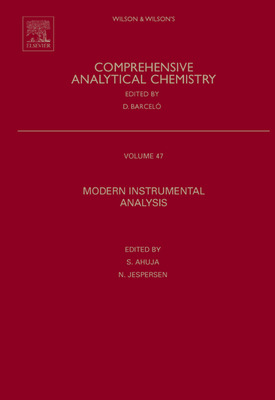
Oct 17, 2018 - R. Fessenden and J. Fessenden, Kimia Organik (1st ed.) (Erlangga, Jakarta, 1999). Google Scholar; 14. Phonguodume, D.
• book reviews General Science Puzzle Fun Jennifer and Michael Leory. Weston Walch, Portland, Maine, 1978. Xvii + 50 pp. General Science Puzzle Fun is a package of word puzzles designed for general science courses in middle-schools and junior-high schools. Seek-and-find word games, cross- word puzzles, and anagrams with one letter of the word answer provided have approxi- mately even distribution in the set.
NBA 2k13 v1.0 All No-DVD [Reloaded] Download NBA.2K13.V1.0.ALL.RELOADED.NODVD.rar seache This in Google. 
Of the fifty puzzles, 25 cover Biology and 3 cover Chemistry. The rest use Astronomy, Physics, Weather, Oceanography, Geology, and Space Travel as subjects.
The solutions to the word puzzles depend upon thestudent's knowing, or being able to find, a body of facts. The puzzles could be improved by having some solutions depend upon concept understanding. Some of the puzzles ask the student to name people or places that might not be mentioned in some textbooks. If the class- room text does not give an answer, the teacher would have to provide other refer- ences or verbally fill the void. The authors state that the puzzles could he used as an introduction or a summary of a unit of study. Arcon 3d architect torrent pc. These puzzles are another version of the old fashioned work sheet, ex- cept that this time the student should have some fun. It is thereviewer's opinion thatthe puzzles would he used best as a teaching supplement to be used occasionally to break up the classroom routine.
Bill Nickels Schoolcran College Livonia, Michigan 48151 The Basis of Organic Chemistry. Second Edition Ralph J. Fessendm and Joan S. Fessen- den, University of Montana.
Allyn & Bacon, Ine., Boston, 1978. Xiv + 420 pp.
The first edition of this one-semester ar- ganic text appeared in 1971 and was reviewed very adequately a t that time hy Q. Peter- sen (d. It is reassuring to see that in this second edition the authors have taken careful note of many of the criticisms leveled a t their first effort. There is no dauht that this newer version represents a substantial improvement which goes beyond a new ewer picture. There have been some substantial changes in the presentation although the format and chapter sequence remain basically the same.

The first four chapters present fundamental concepts. The next five chapters discuss various classes of organic compounds and their reactions. Chapter 10 is a fourteen page summary of the first nine chapters, and the final eight chapters present relevant special topics with a decided emphasis on biulogi- cally important molecules. The key word marginal outline has been omitted while the breakdown of subject headings and sub- headings has been improved.
The relatively random use of green in the illustrations has been abandoned at little or no cost to the understanding. Each chapter ends with a hrief but useful summary. Problems have been included in the text and also a t the ends of the later chapters where they had been omitted previously. Same synthetic problems have been added. Very brief answers are provided to the odd-numbered problems only. A larger type and higher quality paper have been used to make the book more pleasing to the eye. The first chapter on bonding has been substantially rewritten togive the student a somewhat clearer picture of this most fun- damental concept.
The discussion of optical isomerism has been moved from Chapter 2 to Chapter 11. Several chapter introductions have been rewritten in a more understand- able fashion, particularly the one on Acids and Bases. The section on substitution and elimination has been shortened and simpli- fied while an earlier error regarding Saytzeff orientation has been omitted rather than corrected. The section on petroleum chem- istry has been expanded appropriately and sections have been included on photosyn- thesis, insect pheromones, prostaglandins, and nmr.
Minor textual errors corrected. For example, the 'half-assed resonance analogy' regarding mules, donkeys, and horses has been lifted from Morrison and Boyd, and on page 93 reference is made to'aeraaol repellents.' The phonetic spellings have unfortunately been omitted from a very adequate index. In general, it is this reviewer's belief that the text should be competitive in the very prolific market to which it is directed. Thummal University of Houston Hoosfon. Texas 77004 Introduction to Biochemistry Joseph I.
Ruuth, University of Iowa. Saunders Co., Philadelphia, 1978. The author's aim in writing this hrief in- troductory textbook is to 'stimulate students to learn and appreciate the role of hiuchem- istry in the health sciences.' He has suc- ceeded best in this objective in the last two chapters, oneon body fluids and theother on drugs. For the most part the book offers a traditional survey for a one-quarter or one- semester course in hioehemistrv. Each qualitative sort.
Most Popular Articles
- Sony Sound Forge 10 Vocal Eraser Plug In Download
- Download Friends Again Trapped And Unwrapped Rar Free
- New Edition Discography 320kbps Torrent
- Hill Climb Racing Mod Bpan Skachatj Besplatno
- Shrift Matrichnogo Printera
- Vectorworks 2015 Serial Number Crack Key
- Tekstura Padayuschego Snega Dlya Fotoshopa
- Field Genius Keygen
- Choices Elementary Workbook Otveti